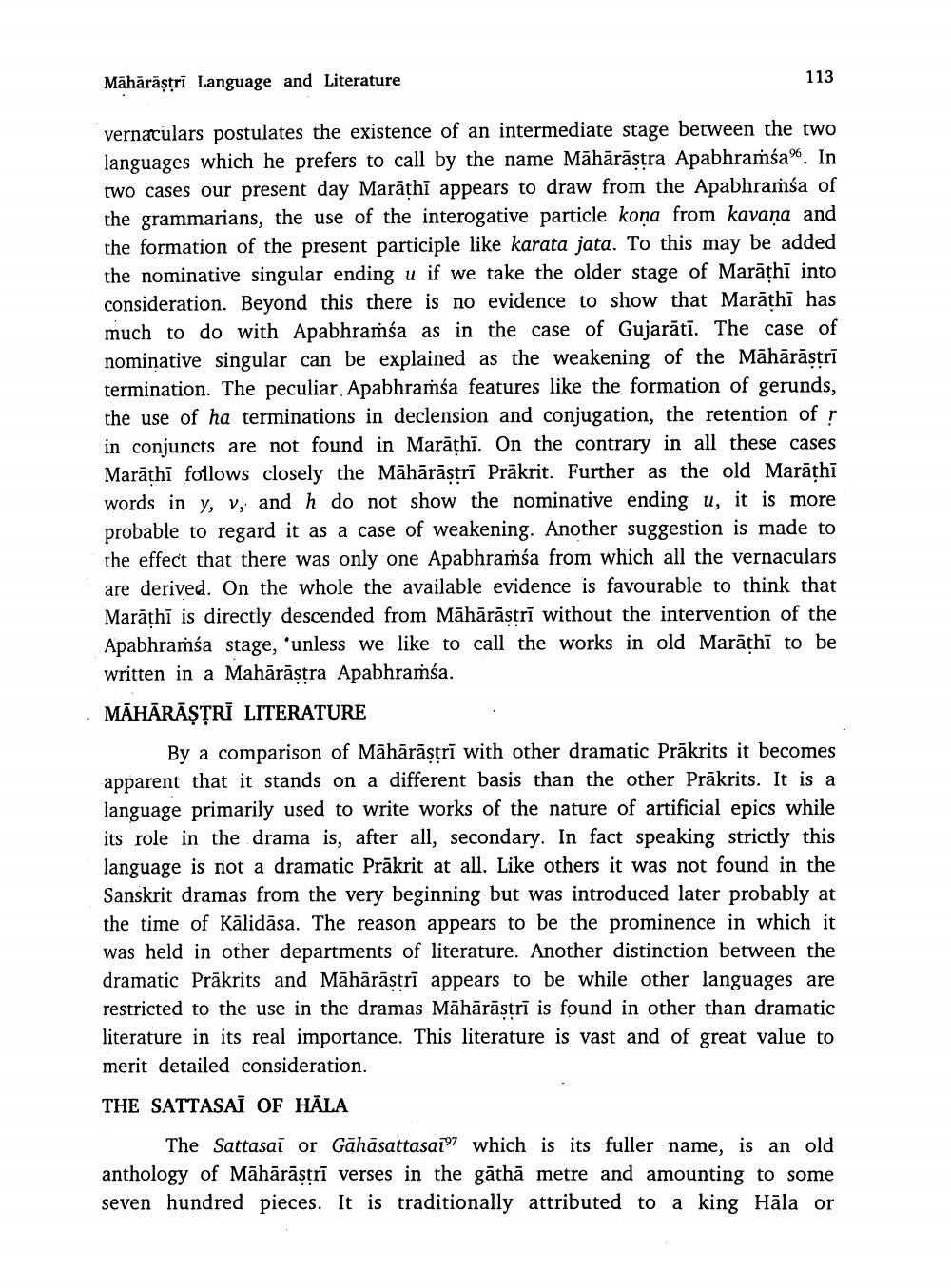________________
Māhārāştri Language and Literature
113
vernaculars postulates the existence of an intermediate stage between the two languages which he prefers to call by the name Māhārāstra Apabhramśa%. In two cases our present day Marathi appears to draw from the Apabhramśa of the grammarians, the use of the interogative particle kona from kavana and the formation of the present participle like karata jata. To this may be added the nominative singular ending u if we take the older stage of Marāthī into consideration. Beyond this there is no evidence to show that Marāthi has much to do with Apabhramsa as in the case of Gujarātī. The case of nominative singular can be explained as the weakening of the Māhārāstrī termination. The peculiar. Apabhramśa features like the formation of gerunds, the use of ha terminations in declension and conjugation, the retention of r in conjuncts are not found in Marathi. On the contrary in all these cases Marathi follows closely the Māhārāstri Prākrit. Further as the old Marāthi words in y, V, and h do not show the nominative ending u, it is more probable to regard it as a case of weakening. Another suggestion is made to the effect that there was only one Apabhramśa from which all the vernaculars are derived. On the whole the available evidence is favourable to think that Marāthī is directly descended from Māhārāstrī without the intervention of the Apabhramsa stage, 'unless we like to call the works in old Marāthī to be written in a Mahārāstra Apabhramba. MĀHĀRĀȘTRĪ LITERATURE
By a comparison of Māhārāstrī with other dramatic Prākrits it becomes apparent that it stands on a different basis than the other Prākrits. It is a language primarily used to write works of the nature of artificial epics while its role in the drama is, after all, secondary. In fact speaking strictly this language is not a dramatic Prākrit at all. Like others it was not found in the Sanskrit dramas from the very beginning but was introduced later probably at the time of Kālidāsa. The reason appears to be the prominence in which it was held in other departments of literature. Another distinction between the dramatic Prākrits and Māhārāstrī appears to be while other languages are restricted to the use in the dramas Māhārāstri is found in other than dramatic literature in its real importance. This literature is vast and of great value to merit detailed consideration. THE SATTASAI OF HĀLA
The Sattasaī or Gāhāsattasai" which is its fuller name, is an old anthology of Māhārāstrī verses in the gāthā metre and amounting to some seven hundred pieces. It is traditionally attributed to a king Hāla or




